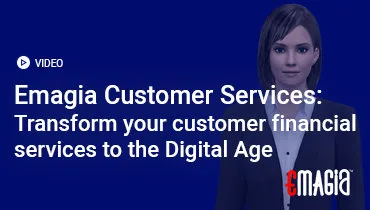In the world of business, efficient cash flow is paramount. Every day that a payment is delayed, it impacts a company’s working capital, liquidity, and ability to invest or manage expenses. For many organizations, particularly those with high volumes of check payments, the traditional process of receiving, opening, sorting, and depositing customer checks can be a significant bottleneck. This manual effort is not only time-consuming and labor-intensive but also introduces risks like human error, theft, and delayed cash application.
Imagine a streamlined system where your customer payments go directly to your bank, are processed immediately, and the payment data is swiftly integrated into your accounting system. This is the transformative power of a Lockbox Service. It’s a fundamental banking solution designed to accelerate the collection and processing of incoming physical payments, bringing a wave of efficiency to your Accounts Receivable (AR) operations.
So, what is a lockbox, and how does this banking service revolutionize payment processing? This comprehensive guide will delve deep into the concept of a `lockbox bank`, exploring its various types, immense benefits, and the underlying mechanisms that make it an indispensable tool for modern businesses. Get ready to discover how implementing a `lockbox service` can significantly enhance your cash flow, reduce operational costs, and bolster financial security.
What is a Lockbox Service? Defining Accelerated Payment Processing
To fully grasp the benefits, let’s establish a clear definition of a `lockbox service` and its role in modern financial operations, moving beyond just `what is a lockbox` in its simplest form.
Defining a Lockbox Service: Centralized Payment Collection by Your Bank
A Lockbox Service is a treasury management solution offered by banks to businesses to streamline the collection and processing of paper-based payments (primarily checks). Instead of customers mailing payments directly to the company’s offices, they send their checks to a special Post Office Box (the “lockbox”) managed by the bank. The bank then collects these payments, processes them, deposits the funds directly into the company’s account, and transmits the payment data and images of the checks/remittance documents to the company. This explains `what is lockbox banking` at its core.
It acts as an outsourced payment reception and initial processing center, allowing businesses to significantly accelerate their cash flow. The bank essentially acts as the company’s mailroom and initial cash application team, ensuring that payments are processed quickly and securely. This is the primary function of a `lockbox bank`.
The Traditional Problem: Delays and Manual Workflows
Before `lockbox services`, businesses would receive checks at their own offices, leading to:
- Mail Float: Time lost while checks travel through the postal system to the company’s location.
- Processing Float: Time lost while internal staff manually open, sort, endorse, record, and prepare checks for `lockbox deposit`.
- Deposit Float: Time lost between receiving the check and depositing it into the bank account.
- Security Risks: Physical handling of checks increases the risk of loss, theft, or damage.
- Resource Drain: Significant manual labor and administrative costs associated with processing high volumes of paper payments.
These inefficiencies directly impact cash flow and resource allocation, highlighting `what is a lock box` aiming to solve.
What is a Lockbox Payment? A Customer-Initiated Direct-to-Bank Deposit
A lockbox payment refers to a payment made by a customer by mailing a check (and often a remittance stub) to a designated lockbox Post Office Box, rather than directly to the company. The customer’s experience remains simple – they just mail their `lockbox check` to a different address. For the business, however, this small change dramatically alters the payment collection workflow. This is central to `lockbox payment processing`.
Types of Lockbox Services: Tailoring Solutions to Your Needs
`Lockbox service providers` offer various configurations to meet different business needs, primarily categorized by geographical scope and the level of data processing involved.
1. Wholesale Lockbox Service: For High-Value, Lower-Volume Payments
Wholesale lockboxes are typically used by businesses that receive a smaller volume of high-value payments from other businesses (B2B). These payments often come with complex remittance information, requiring more manual effort for matching and cash application.
- Process: The bank opens the mail, images the `lockbox check` and remittance documents, and often manually keys in or captures detailed information from the remittance advice.
- Focus: Emphasis on capturing detailed data for complex transactions and faster deposit of large sums.
- Ideal For: Large corporations, government entities, and businesses with a few large clients.
2. Retail Lockbox Service: For High-Volume, Lower-Value Payments
Retail lockboxes are designed for businesses that receive a very high volume of relatively lower-value payments from consumers (B2C) or small businesses. These payments typically come with standardized, scannable remittance stubs.
- Process: The bank uses high-speed scanning and OCR (Optical Character Recognition) technology to process checks and remittance stubs, automating the data capture.
- Focus: Emphasis on speed and automation for high transaction volumes.
- Ideal For: Utility companies, insurance providers, credit card companies, and other businesses with mass consumer billing.
3. Hybrid/Custom Lockbox Solutions
Many banks offer hybrid solutions that combine aspects of both wholesale and retail lockboxes, or allow for significant customization. This enables businesses to tailor the `remittance lockbox` processing to their unique payment profiles, balancing automation with the need for detailed data capture. This highlights how `what is the lockbox` can be adapted.
Geographic Considerations: Regional vs. National Lockboxes
Businesses with customers spread across a wide geographic area might use multiple regional lockboxes to minimize mail float, ensuring payments reach a `lockbox bank` closer to the customer, leading to faster `lockbox deposit` and availability of funds.
The Operational Flow of a Lockbox Service: How It Works
Understanding the step-by-step process of a `lockbox service` clarifies how it accelerates your payment cycle and provides valuable data.
1. Customer Sends Payment to Lockbox P.O. Box
Instead of the company’s address, customers are instructed to mail their `lockbox payment` (check and typically a tear-off remittance stub) to a specific Post Office Box assigned to the company and managed by the `lockbox bank`. This is essentially an `a/c lock box` for your payments.
2. Bank Collects and Opens Mail Multiple Times Daily
The `lockbox bank` or `lockbox service providers` collect mail from the designated Post Office Box frequently throughout the day, often several times, including weekends and holidays. This minimizes mail float. This is more efficient than a simple `post office lock box` used by individuals.
3. Payment Processing: Extraction, Sorting, and Imaging
Upon receipt, bank staff (or automated machines) open the envelopes, separate the `lockbox check` from the remittance advice, sort them, and prepare them for processing. Both the check and the remittance document are digitally imaged. Data from the check (amount, payer) and from the remittance (invoice numbers, deduction codes) is captured, either automatically via OCR or through manual keying for complex cases. This crucial `lockbox processing` step is where data begins to be structured.
4. Funds Deposit: Direct to Your Bank Account
Crucially, the bank deposits the funds from the checks directly into the client company’s bank account, often multiple times a day. This immediate `lockbox deposit` significantly reduces float, making funds available for use much faster than if the company had to process and deposit checks internally. This accelerates `payment lockbox` efficiency.
5. Data Transmission: Remittance Information and Images
After processing, the bank transmits the captured payment data (e.g., customer ID, invoice numbers, amounts paid, deductions taken) and images of the checks and remittance documents to the client company. This data is usually sent electronically via secure channels, often in standardized formats like EDI or custom data files. Modern `lockbox software` or integrated `electronic lockbox services` facilitate this transmission. This allows the company to perform `cash application` for their Accounts Receivable.
Key Benefits of Embracing a Lockbox Service: Beyond Just Speed
The advantages of implementing a `lockbox service` extend far beyond accelerating cash flow, impacting operational efficiency, financial security, and data accuracy.
1. Accelerated Cash Flow and Reduced Float
This is the primary driver. By outsourcing the collection and initial processing of payments to the bank, companies drastically reduce mail float, processing float, and deposit float. Funds are available sooner, improving working capital, liquidity, and Days Sales Outstanding (DSO).
2. Enhanced Operational Efficiency and Cost Savings
A `lockbox service` eliminates the need for internal staff to handle physical mail, open envelopes, sort checks, and manually prepare deposits. This frees up valuable internal resources, reduces administrative costs (labor, paper, equipment), and allows AR teams to focus on more strategic tasks like collections and dispute resolution. It’s a key aspect of `lockbox automation`.
3. Improved Security and Reduced Risk
By shifting the handling of physical checks from internal mailrooms to a secure bank environment, the risk of theft, loss, or damage to payments is significantly reduced. This also enhances internal controls by separating the handling of cash from reconciliation. The bank’s robust security measures ensure that `what is in a lock box` is protected.
4. Enhanced Data Accuracy and Streamlined Reconciliation
Lockbox services, particularly those with advanced `lockbox software` and `electronic lockbox payments` capabilities, provide clean, structured payment data and images. This vastly simplifies the cash application and reconciliation process within the company’s accounting system, reducing manual errors and improving data integrity.
5. Scalability for Growing Businesses
As businesses grow and payment volumes increase, manual processing can become unsustainable. A `lockbox service` provides a scalable solution, allowing companies to handle higher volumes of incoming payments without needing to proportionally increase internal headcount or infrastructure. This is critical for efficient `lockbox processing`.
6. Better Audit Trail and Compliance
The bank provides detailed logs and images of all processed payments, creating a comprehensive audit trail. This simplifies internal controls, external audits, and compliance with financial regulations, ensuring transparency and accountability for every `lockbox payment`.
Implementing a Lockbox Service: A Roadmap to Integration
Adopting a `lockbox service` involves careful planning and collaboration with your chosen `lockbox bank` or `lockbox service providers`.
1. Assess Your Payment Volume and Type
Analyze your current incoming payment volume, the mix of checks vs. electronic payments, and the complexity of accompanying remittance advice. This will help determine whether a wholesale, retail, or hybrid `lockbox service` is most suitable for your needs and how to define `whats a lock box` for your specific context.
2. Select a `Lockbox Bank` and Negotiate Terms
Research and choose a financial institution that offers comprehensive `lockbox services` aligning with your business requirements. Negotiate pricing, service level agreements (SLAs), data transmission formats, and reporting capabilities. Consider their technology (e.g., `electronic lockbox` capabilities, `digital lockbox` features) and customer support.
3. Update Invoicing and Customer Communication
Once the `lockbox service` is established, update all your invoices, statements, and payment instructions to direct customers to mail payments to the new lockbox P.O. Box address. Clearly communicate this change to your customers to ensure a smooth transition and avoid payment delays.
4. Integrate Data Feeds with Your Accounting System
This is a critical step. Work with your bank and internal IT team to set up automated data feeds from the `lockbox service` directly into your Accounts Receivable (AR) system or ERP. This ensures that payment data (payer, amount, invoice numbers, deductions) is seamlessly imported, streamlining cash application and reconciliation. Many modern systems can automate `lockbox automation` beyond just initial capture.
5. Train Your AR and Treasury Teams
Ensure your Accounts Receivable and Treasury teams are fully trained on the new `lockbox processing` workflows, how to access data and images from the bank’s portal, and how to handle exceptions or discrepancies. Their roles will shift from manual processing to exception management and strategic analysis.
6. Monitor Performance and Optimize
Continuously monitor key metrics like Days Sales Outstanding (DSO), cash application efficiency, and manual intervention rates. Gather feedback from your AR team and your bank to identify areas for further optimization of your `lockbox service` and overall `payment lockbox` strategy.
Emagia: Elevating Your Cash Application with Seamless Lockbox Integration
In the relentless pursuit of accelerated cash flow and optimized working capital, the efficiency of incoming payment processing is paramount. Emagia’s AI-powered Order-to-Cash (O2C) platform is meticulously designed to transform your entire revenue cycle, including seamless integration with and enhancement of your Lockbox Service capabilities.
Emagia understands that while a `lockbox service` provides the critical initial speed of getting checks into your bank, the true challenge lies in efficiently applying that cash and resolving any associated deductions or discrepancies. Our cutting-edge Artificial Intelligence and Machine Learning algorithms automatically ingest and process the remittance data provided by your `lockbox bank`, regardless of its format (electronic files, images of remittance slips, or even `lockbox check` images themselves). This means that the valuable `parsing information` from your `lockbox payment services` is instantly extracted, interpreted, and prepared for precise cash application.
Our intelligent cash application engine leverages this rich lockbox data to achieve unparalleled straight-through processing. It automatically matches incoming `lockbox payment` batches to open invoices with high accuracy, drastically reducing unapplied cash and reconciliation time. For any deductions identified by the `lockbox processing`, Emagia’s platform automatically initiates a streamlined dispute resolution workflow, minimizing revenue leakage. By partnering with Emagia, you’re not just benefiting from a `lockbox service`; you’re gaining an intelligent financial partner that transforms your entire cash application process into a strategic asset, maximizing the speed and accuracy benefits of your `lockbox deposit`, ensuring faster cash conversion, and providing real-time visibility into your incoming revenue streams.
Frequently Asked Questions (FAQs) About Lockbox Services
What is a lockbox service in banking?
A lockbox service in banking is a treasury management solution where a bank manages a special Post Office Box for a business. Customers mail payments (primarily checks) to this lockbox, and the bank collects, processes, and deposits the funds directly into the business’s account, then transmits the payment data and images to the company.
How does a lockbox service accelerate a company’s cash flow?
A lockbox service accelerates cash flow by significantly reducing mail float (payments arriving faster at the bank), processing float (bank processing is quicker than internal staff), and deposit float (funds are deposited multiple times a day). This makes funds available sooner for the company’s use.
What is the difference between a wholesale and retail lockbox service?
A wholesale lockbox service is for lower volumes of high-value, complex business-to-business (B2B) payments requiring more manual data capture. A retail lockbox service is for high volumes of lower-value, standardized consumer-to-business (B2C) payments, relying heavily on automation and scanning technology for efficient `lockbox processing`.
Can electronic lockbox payments also be processed through a lockbox?
While the primary function of a `lockbox service` is for paper checks, modern `electronic lockbox services` can integrate and provide data for electronic payments (like ACH or wire transfers) received directly by the bank, consolidating all incoming payment data for the client company, effectively acting as a `digital lockbox` for electronic remittance information.
What information does a lockbox service provide back to the company?
A lockbox service typically provides digital images of the `lockbox check` and remittance documents, along with structured payment data (e.g., customer ID, invoice numbers, amounts paid, deductions taken). This data is transmitted electronically, often directly into the company’s Accounts Receivable system, streamlining `lockbox automation` for cash application.
Does using a lockbox service eliminate the need for an internal Accounts Receivable team?
No, using a lockbox service does not eliminate the need for an internal Accounts Receivable team. It frees up AR staff from manual check processing and deposit tasks, allowing them to focus on higher-value activities such as reconciling more complex payments, resolving disputes, managing collections, and performing credit analysis. It simply shifts the nature of their work.
What is the primary security benefit of using a lockbox service?
The primary security benefit of using a lockbox service is the significant reduction in the risk of theft, loss, or damage of incoming physical payments. By having the bank handle the checks in a secure environment from the moment they are received, it minimizes the exposure of funds within the company’s own mailroom or premises.
Conclusion: Building Financial Agility Through Smart Payment Collection
As we’ve thoroughly explored, a Lockbox Service is a powerful, yet often underutilized, tool in the arsenal of modern treasury and Accounts Receivable management. It represents a strategic outsourcing of the labor-intensive and risk-prone task of processing incoming paper payments, transforming a significant bottleneck into a streamlined, efficient, and secure workflow.
By leveraging the capabilities of a `lockbox bank`, businesses can achieve immediate and profound benefits: drastically accelerated cash flow, significant operational cost savings, enhanced security, and improved data accuracy for reconciliation. Whether it’s a wholesale solution for large B2B payments or a retail one for high-volume consumer checks, the adaptability and efficiency of `lockbox services` make them indispensable.
Ultimately, implementing a robust Lockbox Service is about more than just collecting checks faster; it’s about building financial agility, optimizing working capital, and empowering your finance team to focus on strategic initiatives rather than administrative tasks, ensuring a healthier and more predictable cash flow for your entire organization.



